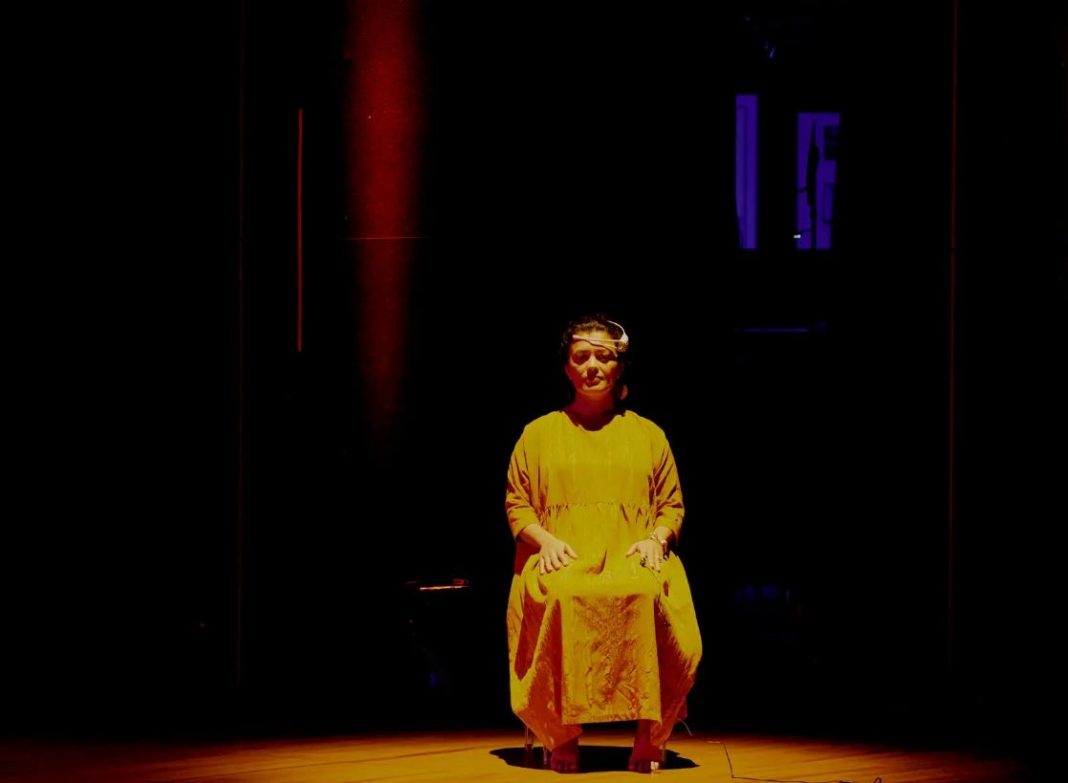As Shanta Thake, the artistic director of Lincoln Center, flipped through some recently taken photos, a staff member said, “This is what your brain was doing!”
It was the end of a recent rehearsal for “Song of the Ambassadors” at Alice Tully Hall. “Song of the Ambassadors” is a work-in-progress that combines traditional opera with AI and neuroscience. The photos did seem to show Thake’s brain doing something amazing: making pictures of flowers. Bright, colourful, and strange flowers with no known species or genus. Their size, colour, and shape change all the time, as if botany and fluid dynamics had merged in some way.
“Song of the Ambassadors,” which was shown to the public at Tully on Tuesday evening, was made by K Allado-McDowell, who leads Google’s Artists and Machine Intelligence initiative, using the A.I. programme GPT-3; the composer Derrick Skye, who uses electronics and non-Western themes in his work; and the data artist Refik Anadol, who contributed A.I.-generated visualisations. There were three singers who were “ambassadors” for the sun, space, and life. There was also a drummer, a violinist, and a flautist. Thake, who was sitting quietly to one side of the stage with a simple, cheap EEG monitor on her head, was the “brainist.” She fed brain waves into Anadol’s A.I. algorithm to make the otherworldly patterns.
Just to the side of the stage, level with the musicians, Ying Choon Wu and Alex Khalil, two neuroscientists, were sitting. They were watching the brain waves of two audience members who were sitting nearby and had research-grade headsets from a company called Cognionics on their heads.
Wu, a scientist at the University of California, San Diego, studies how works of art affect the brain. For another study, she is watching people’s brain waves as they look at paintings at the San Diego Museum of Art. Khalil used to do research at UC San Diego and now teaches ethnomusicology at University College Cork in Ireland. He is interested in how music makes people behave in the same way at the same time. Both want to bring art and science together.
Which makes them a good fit for Allado-McDowell, who first pitched “Song of the Ambassadors” in January 2021 as a participant in the Collider, a Lincoln Center fellowship programme funded by the Mellon Foundation. Allado-McDowell, 45, who uses the pronouns “they” and “them,” said that her idea was to think of the concert hall as a place where people could heal.
Healing has kept them busy for a long time. They had terrible migraines for years, but when they were students at San Francisco State University, they signed up for a yoga class that changed their lives in a surprising way. “I was surrounded by rainbows,” they’ll write in an upcoming book. “Light balls flickered in front of my eyes. I broke out of the teacher’s hypnotic trance by taking short, shallow breaths and running out into the hall. As I knelt on the carpet, a cool liquid began to flow out of my lower back. At the same time, a glowing purple sphere pulsed gold and green in my mind.
They were told that this was a mild form of kundalini awakening. In Hindu mythology, kundalini is the coiled serpent at the base of the spine. It is a powerful energy that usually doesn’t wake up until a lot of meditation and chanting.
After that, it took years to try to get one. They got a master’s degree in art along the way and went to work in Seattle for a Taiwanese tech company. At one point, while sitting in a clearing in the Amazon rainforest, they had this thought: “A.I.s are the children of humanity. They must learn how to love and be loved. If not, they’ll turn into psychopaths and kill everyone.”
Later, in 2014, Allado-McDowell joined a new team at Google that was researching artificial intelligence. When the leader suggested working with artists, they stepped up to take charge of the project. Artists and Machine Intelligence started in February 2016, 50 years after Robert Rauschenberg and AT&T Bell Labs engineer Billy Kluver led “9 Evenings: Theater and Engineering,” the first event to combine art and technology. Allado-McDowell saw the link right away.
One of the first partnerships they made was with Anadol, first for “Archive Dreaming,” which was inspired by Borges’s story “The Library of Babel,” and then for “WDCH Dreams,” which was Anadol’s A.I.-driven projection onto the swaying steel superstructure of the Walt Disney Concert Hall in Los Angeles, which was designed by Frank Gehry.
Skye’s music has times when it’s busy and times when it’s quiet, and so does Anadol’s art. Skye said, “We wanted to bring people into and out of a meditative space.” “I made these long gaps where we only make sounds from the environment. Then we bring them out slowly.”
Wu and Khalil, two neuroscientists who worked on the project, haven’t looked at their data yet. But at a panel discussion before Tuesday’s performance, Khalil made a prediction that made the audience cheer.

